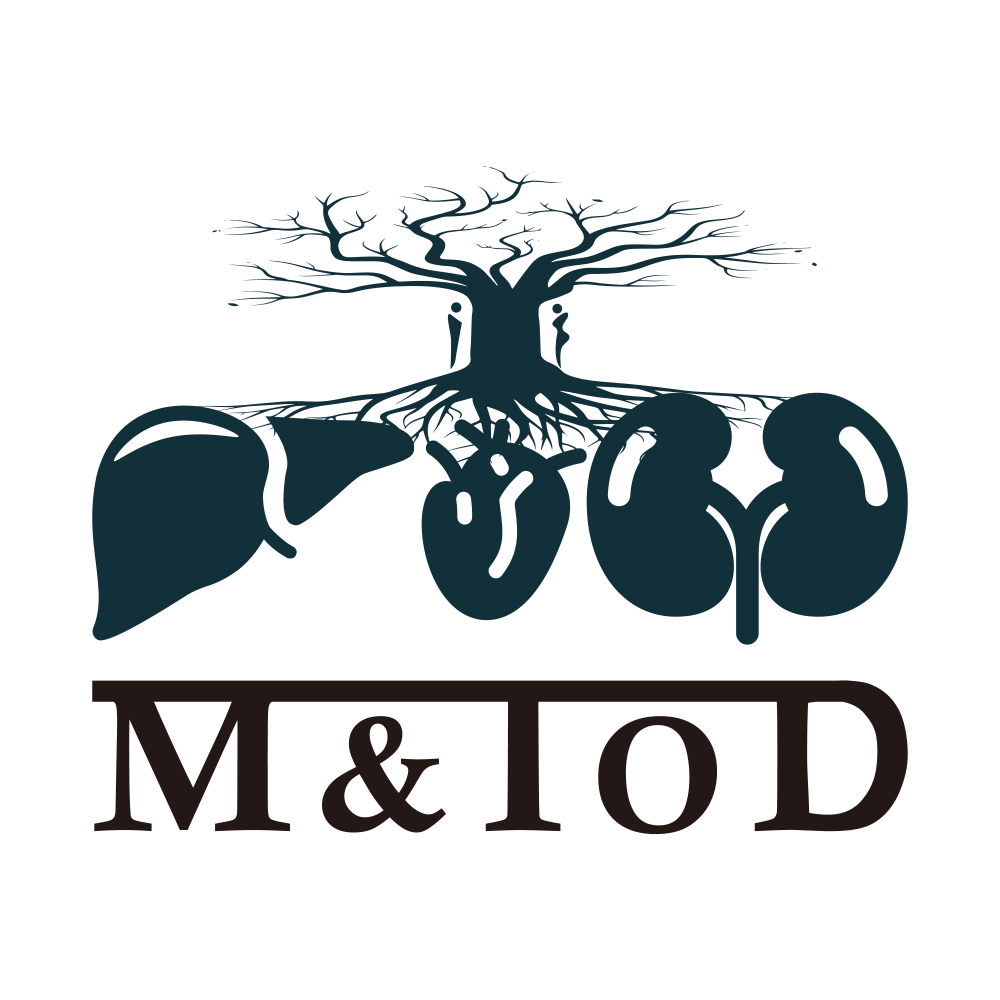A Special Interview with Prof. Francesco Giorgino on Emerging Topics in Diabetes Mellitus: From p66Shc to Sex Hormones
On May 8, 2025, Metabolism and Target Organ Damage (M&TOD) was honored to host an academic interview with its newly appointed Editorial Board member, Prof. Francesco Giorgino, a leading endocrinologist from Italy. Moderated by Editor-in-Chief Prof. Amedeo Lonardo, the discussion explored emerging research topics in the field of diabetes mellitus, including the biological role of the p66Shc protein, the therapeutic potential of the myokine irisin, the influence of sex hormones on metabolic disorders, the significance of gender-affirming hormone therapy in research, and the clinical outlook of the novel drug tirzepatide.
Prof. Giorgino began by analyzing the role of p66Shc in regulating oxidative stress, apoptosis, and aging. He noted the ongoing debate regarding its involvement in the progression of MASLD (metabolic dysfunction-associated steatotic liver disease). While some studies suggest a pro-fibrotic role for p66Shc, others show that its deletion protects against obesity without significantly improving metabolic dysfunction. According to Prof. Giorgino, this apparent paradox underscores the need for more tissue-specific and temporally controlled studies to better elucidate its mechanisms and to guide future therapeutic strategies.
Regarding the myokine irisin - an area of growing scientific interest - Prof. Giorgino highlighted its dual potential to preserve pancreatic β-cell function and mitigate hepatic steatosis, particularly in models of high-fat diet-induced metabolic dysfunction. He emphasized that irisin represents a promising therapeutic target in the management of MASLD and warrants further validation in preclinical and clinical settings.
When discussing the role of sex hormones in metabolic diseases, Prof. Giorgino underscored the pivotal functions of estrogens and androgens in the pathophysiology of type 2 diabetes and MASLD. These hormones affect key pathways such as insulin sensitivity, fat distribution, and inflammation. He further remarked that studies involving transgender individuals undergoing hormone therapy offer unique human models for exploring sex-related metabolic differences. However, he cautioned that variations in hormone dosages and physiological conditions in this population must be carefully considered when interpreting findings.
Turning to tirzepatide, a novel dual GIP/GLP-1 receptor agonist, Prof. Giorgino shared insights from his own research. He affirmed the drug’s robust efficacy in glycemic control and weight reduction among patients with type 2 diabetes and obesity. Nonetheless, he stressed the need for additional clinical data to assess its safety and therapeutic potential in MASLD patients, particularly those with fibrosis or progressing to MASH (metabolic dysfunction-associated steatohepatitis).
In the closing segment, Prof. Giorgino addressed the widespread challenge of reviewer scarcity in academic publishing. He advocated for a fairer and more transparent peer review system, proposing incentives such as formal recognition, academic credit, and visible acknowledgments for reviewers. These measures, he argued, could encourage broader participation and help build a more sustainable research ecosystem.
This interview offered a multidimensional view of current issues in basic science, translational research, and academic practice, reflecting Prof. Giorgino’s extensive expertise and forward-looking perspective in diabetes mellitus research. M&TOD will continue to invite leading experts for high-quality academic dialogues to foster international collaboration and advance the field toward new frontiers.
Questions for the interview:
1. The p66Shc protein negatively affects glucose metabolism, modulates oxidative stress, and plays a major role in inducing cell apoptosis and aging (Biondi, G., International Journal of Molecular Sciences 2023, PMID: 38203279). Metabolic dysfunction-associated steatotic liver disease (MASLD), formerly known as nonalcoholic fatty liver disease (NAFLD), is also associated with diabetes, oxidative stress, and hepatocyte senescence (Talamantes S, JHEP Rep. 2023 Jun 9;5(9):100811. PMID: 37575883). Of concern, type 2 diabetes (T2D) is a risk factor for fibrotic progression of MASLD (Cernea S. Life (Basel). 2024; PMID: 38398781). Therefore, it could be reasonable to speculate on the potential role of p66Shc protein in the fibrotic outcomes in MASLD. Conflicting with this prediction, however, p66Shc deletion or deficiency protects from obesity but not metabolic dysfunction in mice and humans (Ciciliot S Diabetologia. 2015. PMID: 26122877). How do you interpret these seemingly conflicting data in view of a possible research agenda in this field?
2. The myokine irisin has been shown to protect beta-cell function (Natalicchio A, Diabetes. 2017 Nov;66(11):2849-2856. PMID: 28724742). Additionally, it exerts an anti-steatotic effect in high-fat diet-fed mice and in HepG2 cells exposed to palmitic acid (Zhao Y, Chin Med J (Engl). 2025. PMID: 39965865). Do you consider irisin to be a novel therapeutic target for the management of metabolic disorders and MASLD?
3. Based on your extensive experience in endocrinological research, could you comment on the role of sex hormones in the development of diabetes (Mauvais-Jarvis F Diabetes. 2017. PMID: 28223340; Yao QM, Endocr Connect. 2018. PMID: 29233816) and in target organ damage, particularly MASLD? (Cherubini A, Trends Mol Med. 2024. PMID: 38890029 Meyer J, Front Endocrinol (Lausanne). 2025. PMID: 40162312).
4. Following up on the previous question 3, do you believe that gender-affirming hormone therapies in transgender individuals (Tangpricha V. J Clin Endocrinol Metab. 2022. PMID: 35106582) provide a useful model to explore this topic? Or do you think that the use of supra-physiological hormonal doses in this population may hinder our understanding of physiological associations?
5. Tirzepatide has demonstrated significant efficacy in reducing fasting glucose and body weight among subjects with T2D (Giorgino F, Diabetes Care. 2025. PMID: 40100982). In your view, does this drug also show a sufficiently favorable safety profile for use in individuals with metabolic dysfunction-associated steatohepatitis (MASH) and advanced MASLD-related fibrosis?
6. As a respected leader in your field, you are frequently invited to serve as a Reviewer for academic manuscripts. The editorial community is currently facing a significant shortage of qualified Reviewers. What is your opinion about how Reviewers might be better incentivized? (Humphreys H. Lancet. 2022. doi: 10.1016/S0140-6736(22)00921-7. PMID: 35843240).
Personal Introduction:

Francesco Giorgino is Professor of Endocrinology and Chairman of the Department of Precision and Regenerative Medicine and Ionian Area at the University of Bari Aldo Moro, Bari, Italy. He is also Chief of the Division of Endocrinology at the University Hospital Policlinico Consorziale in Bari. Prof. Giorgino received his M.D. from the University of Bari Aldo Moro and his Ph.D. from the University of Naples Federico II, in Italy. After completing clinical training in endocrinology at the University of Catania, Italy, he worked at the Joslin Diabetes Center and Harvard Medical School in Boston, MA, USA, as a postdoctoral research fellow and visiting scientist (1990-1994). He has received numerous scientific honors, including the Juvenile Diabetes Research Foundation International (JDRF) Fellowship (New York, NY, USA), the Mary K. Iacocca Foundation Fellowship (Boston, MA, USA), the Glaxo-Wellcome Award from the European Association for the Study of Diabetes (EASD), the Aldo Pinchera and Cassano Awards from the Italian Society of Endocrinology, and the Alcmeone Award from the Italian Society of Diabetology. Prof. Giorgino served as President of the Italian Society of Endocrinology (2019-2021) and is currently Senior Vice-President of the European Association for the Study of Diabetes. His research interests include the mechanisms of insulin resistance and beta-cell dysfunction in type 2 diabetes and the effects of diabetes drugs on pancreatic islets and the cardiovascular system. He has an H-index of 76 and over 22,000 citations (Google Scholar).
Editor: Tilda Li
Language Editor: Catherine Yang
Production Editor: Ting Xu
Respectfully submitted by the Editorial Office of Metabolism and Target Organ Damage









